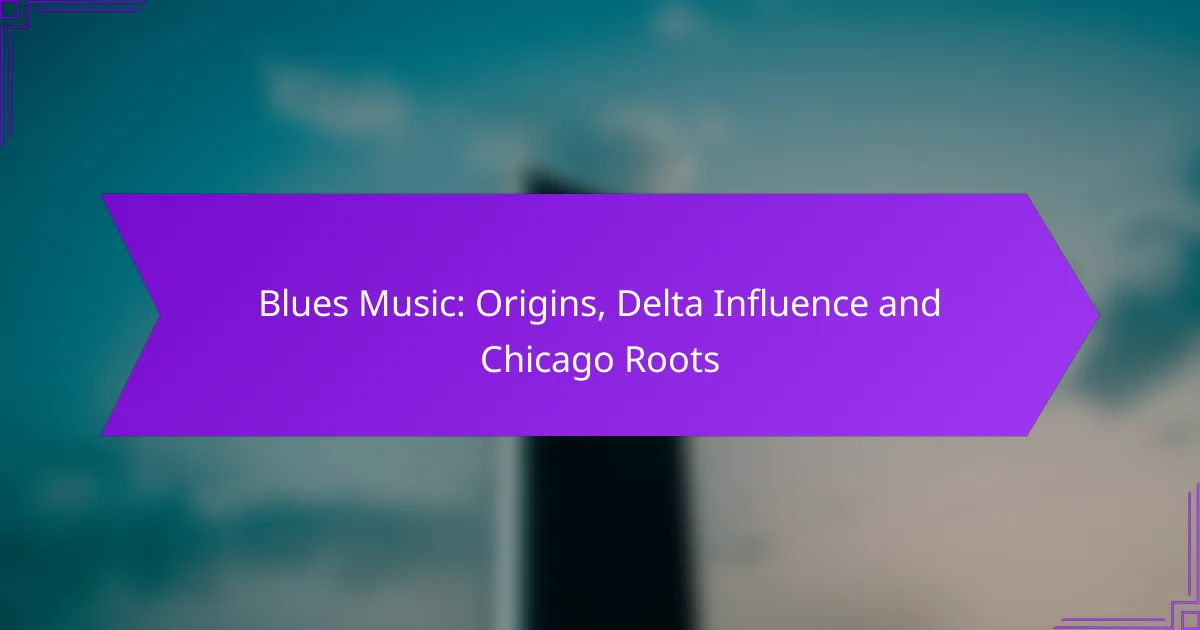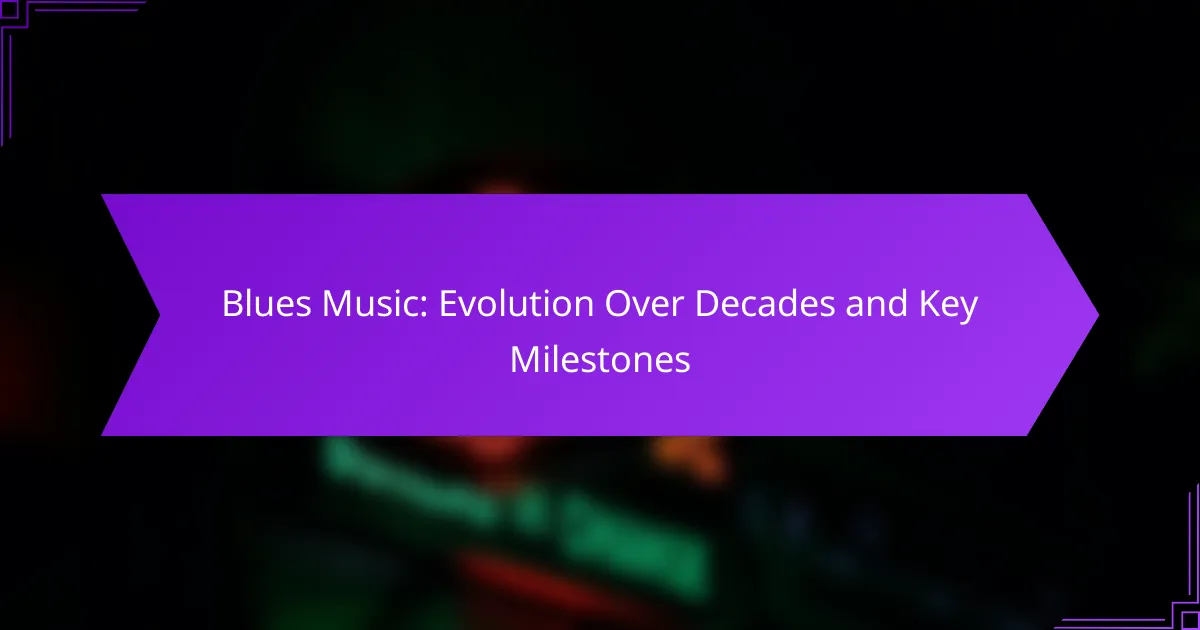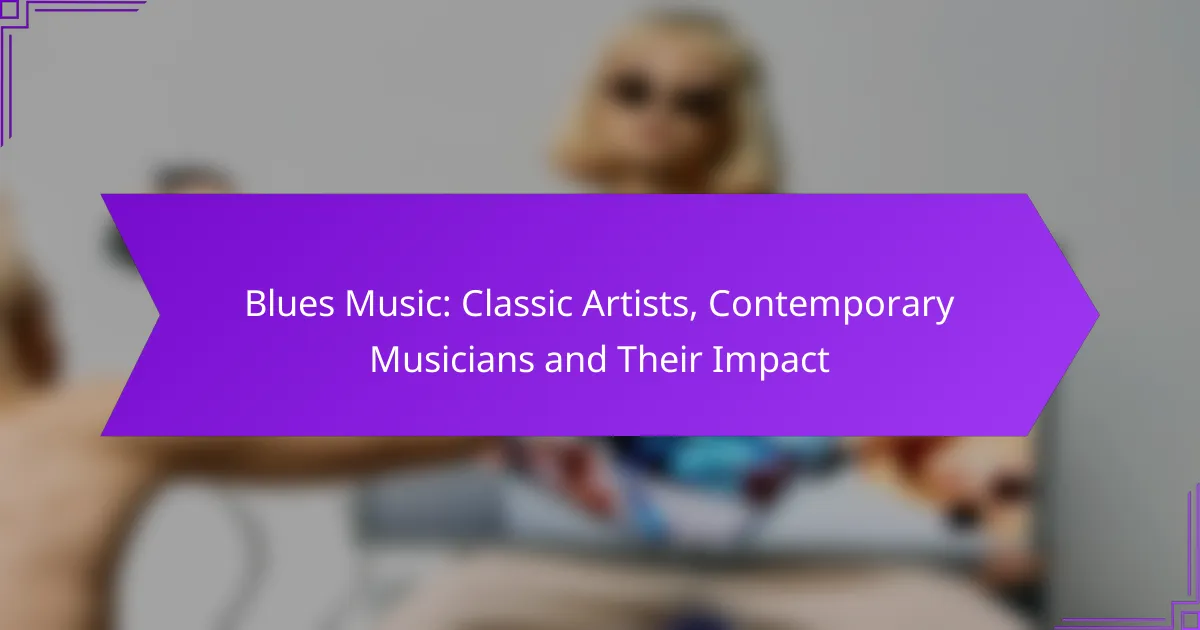Blues music has evolved significantly since its inception in the late 19th century, shaped by cultural influences and technological advancements. Today, technology enhances production quality and expands distribution, allowing artists to reach broader audiences and experiment with new sounds. Modern blues reflects a fusion with other genres, a revival of classic styles, and an emphasis on live performances, showcasing the genre’s adaptability and ongoing evolution.

How has technology impacted blues music?
Technology has significantly transformed blues music by enhancing production quality, expanding distribution channels, and facilitating artist promotion. These advancements have allowed musicians to reach wider audiences and experiment with new sounds, ultimately reshaping the genre.
Digital recording advancements
Digital recording technology has revolutionized how blues music is produced. Musicians can now record high-quality audio at home using affordable equipment, which was once only available in professional studios. This democratization of recording has led to a surge in independent blues artists who can create and distribute their music without the need for major label support.
With tools like digital audio workstations (DAWs), artists can manipulate sound with precision, layering tracks and applying effects that enhance the overall quality. This flexibility encourages creativity, allowing musicians to experiment with different styles and sounds within the blues genre.
Streaming platforms influence
Streaming platforms have drastically changed how blues music is consumed and monetized. Services like Spotify and Apple Music provide artists with access to global audiences, enabling them to share their work without geographical limitations. This shift has allowed blues musicians to gain recognition and build fan bases that were previously unattainable.
However, the reliance on streaming can also pose challenges, as artists often earn lower per-stream royalties compared to traditional sales. Musicians must develop strategies to promote their music effectively on these platforms to maximize their reach and revenue.
Social media promotion
Social media has become a vital tool for blues artists to connect with fans and promote their music. Platforms like Instagram, Facebook, and TikTok allow musicians to share snippets of their work, engage with audiences, and create a personal brand. This direct interaction fosters a sense of community and loyalty among fans.
Effective social media promotion requires consistent content creation and engagement. Artists should consider sharing behind-the-scenes footage, live performances, and personal stories to create a more relatable image and attract followers.
Music production software
Music production software has made it easier for blues musicians to create polished tracks without needing extensive technical knowledge. Programs like Ableton Live, Pro Tools, and GarageBand offer user-friendly interfaces and a variety of tools for recording, editing, and mixing music. This accessibility encourages more artists to produce their own work.
When choosing production software, artists should consider their specific needs, such as the type of music they create and their budget. Many software options offer free trials, allowing musicians to experiment before committing to a purchase.
Virtual collaboration tools
Virtual collaboration tools have enabled blues musicians to work together regardless of location. Platforms like Zoom, Skype, and online collaboration software allow artists to jam, write, and record music in real-time, fostering creativity and innovation. This has become especially important in recent years, as many artists have faced restrictions on in-person gatherings.
To make the most of virtual collaboration, musicians should ensure they have reliable internet connections and familiarize themselves with the tools they plan to use. Setting clear goals for each session can also help maximize productivity and maintain focus during collaborative efforts.
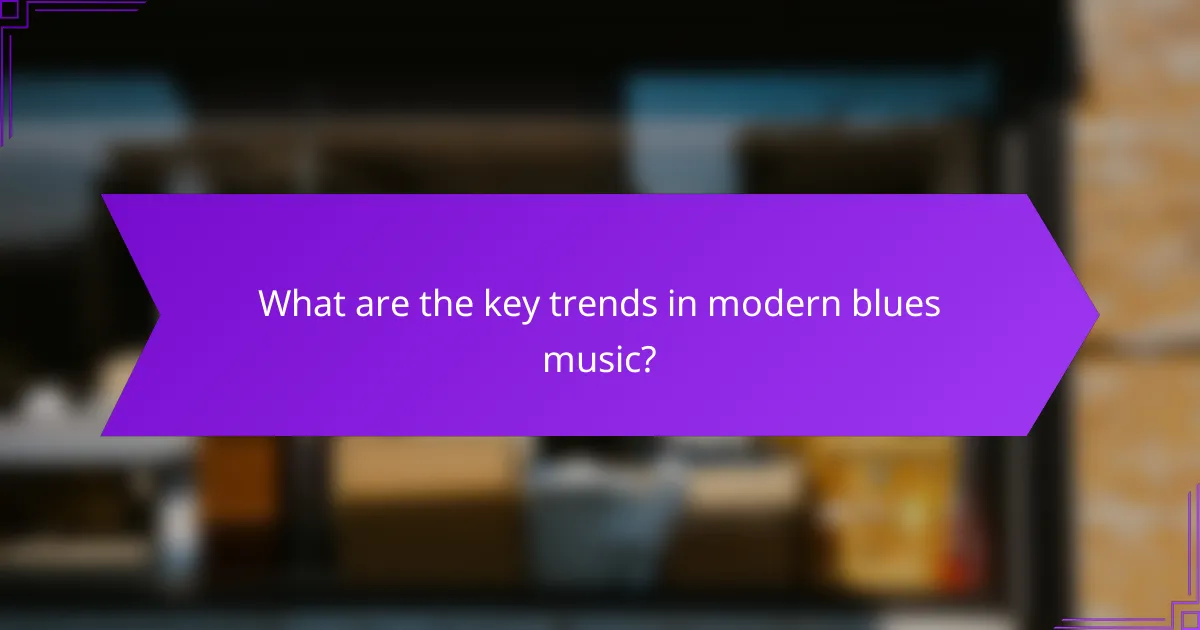
What are the key trends in modern blues music?
Modern blues music is characterized by its fusion with other genres, a revival of classic styles, an emphasis on live performances, and the innovative use of technology in songwriting. These trends reflect the genre’s adaptability and ongoing evolution in response to cultural shifts and technological advancements.
Fusion with other genres
Blues music increasingly incorporates elements from genres like rock, jazz, and hip-hop, creating a rich tapestry of sound. This fusion allows artists to reach broader audiences and experiment with new musical ideas, often resulting in unique sub-genres such as blues-rock or jazz-blues.
For example, artists like Gary Clark Jr. blend traditional blues with rock influences, while others may incorporate electronic elements, appealing to younger listeners. This trend encourages collaboration across genres, leading to innovative performances and recordings.
Revival of classic styles
There is a notable resurgence in interest for classic blues styles, such as Delta and Chicago blues. Contemporary artists often draw inspiration from legendary figures like Muddy Waters and B.B. King, reinterpreting their music for today’s audience.
This revival is evident in festivals and music events that celebrate traditional blues, helping to educate new generations about its roots. Artists may perform covers or original songs that pay homage to these classic styles, ensuring their legacy continues.
Emphasis on live performances
Live performances have become a cornerstone of modern blues music, with many artists prioritizing gigs over studio recordings. This focus on live shows allows musicians to connect with audiences more intimately and showcase their improvisational skills.
Venues ranging from small clubs to large festivals provide platforms for blues artists, fostering a vibrant live music scene. Engaging performances often include audience participation, enhancing the overall experience and building a loyal fan base.
Use of technology in songwriting
Technology plays a significant role in the songwriting process for modern blues artists. Digital audio workstations (DAWs) and music production software enable musicians to experiment with sounds and arrangements that were previously difficult to achieve.
Additionally, online collaboration tools allow artists to work together remotely, expanding creative possibilities. Many musicians use social media to share their work and receive immediate feedback, which can influence their songwriting and performance choices.
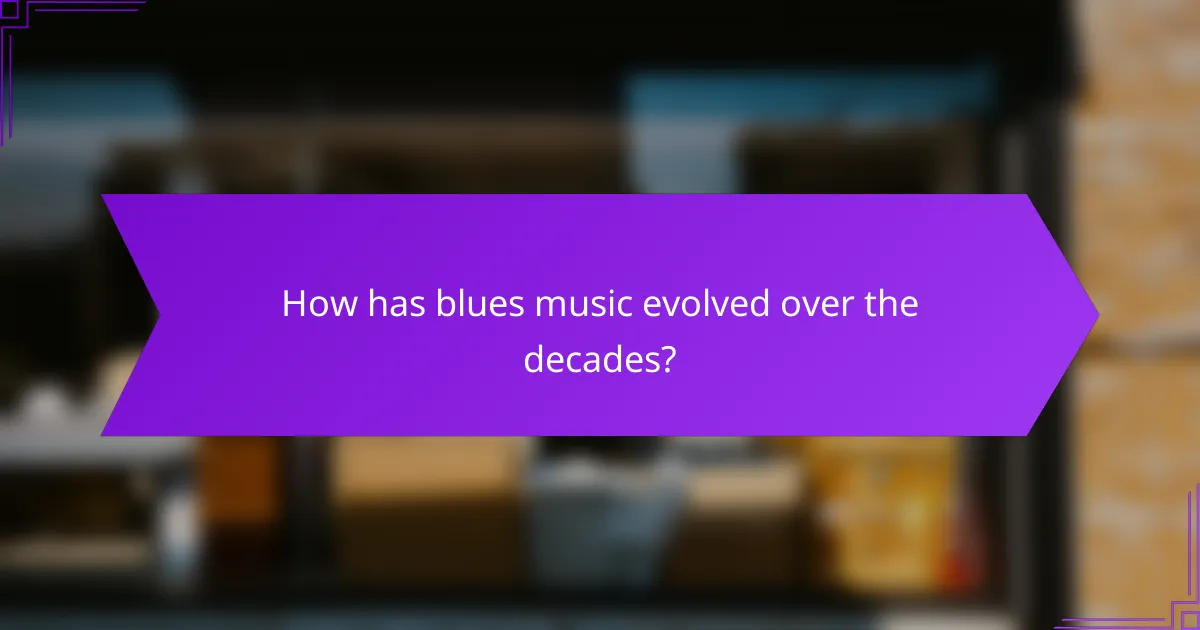
How has blues music evolved over the decades?
Blues music has undergone significant evolution since its origins in the late 19th century, influenced by various cultural and technological changes. From its roots in African American communities to its integration into modern genres, blues has adapted while maintaining its core emotional and musical elements.
Historical influences on blues
The origins of blues music can be traced back to African musical traditions, work songs, and spirituals, which were prevalent among African American communities in the southern United States. The Great Migration in the early 20th century brought these musical styles to urban centers, where they blended with jazz and other genres, shaping the sound of modern blues.
Additionally, the introduction of the phonograph and radio in the early 20th century played a crucial role in popularizing blues music. Artists could reach broader audiences, and regional styles began to merge, creating a more unified sound while still retaining local characteristics.
Major artists and their contributions
Key figures in blues history include B.B. King, Muddy Waters, and Robert Johnson, each contributing to the genre’s development in unique ways. B.B. King is renowned for his expressive guitar playing and vocal style, which influenced countless musicians across genres.
Muddy Waters is often credited with bringing electric blues to the forefront, particularly in Chicago, while Robert Johnson’s songwriting and guitar techniques laid the groundwork for future rock and blues artists. Their legacies continue to inspire new generations of musicians.
Regional variations in blues
Blues music exhibits distinct regional variations, each with unique characteristics. Delta blues, originating from the Mississippi Delta, is characterized by its raw, acoustic sound, often featuring slide guitar and deeply emotional lyrics.
In contrast, Chicago blues incorporates electric instruments and a more polished production style, reflecting the urban environment. Texas blues adds a unique flair with influences from country music, showcasing a blend of styles that enrich the overall genre.
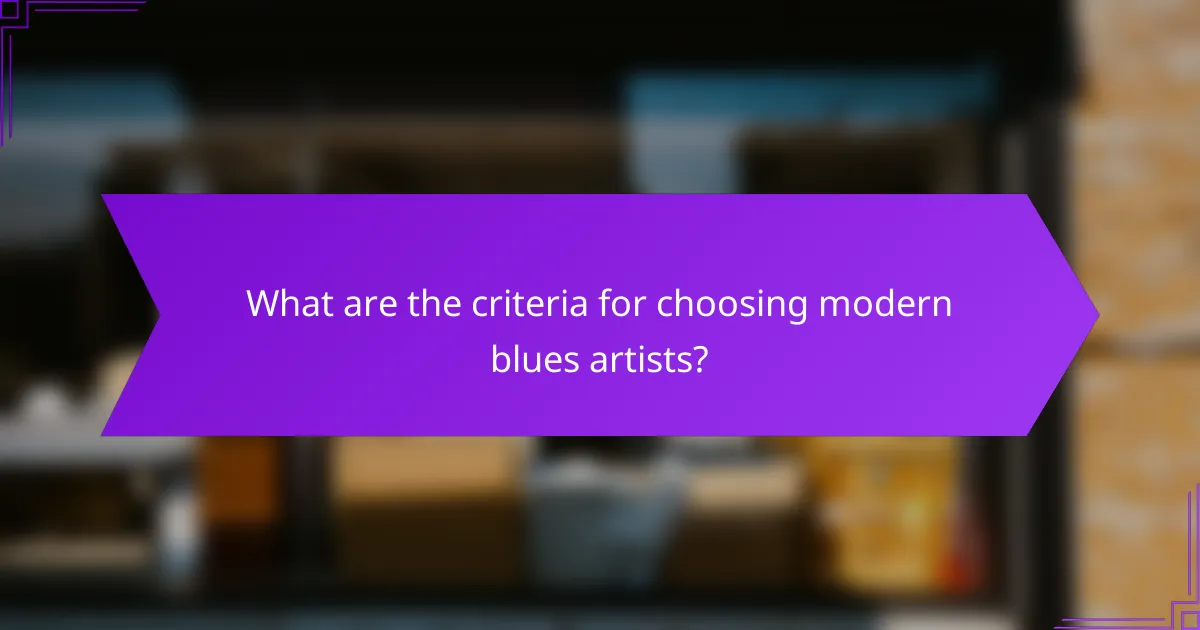
What are the criteria for choosing modern blues artists?
When selecting modern blues artists, consider their musical style, live performance reputation, and social media presence. These factors help gauge their impact on the genre and their ability to connect with audiences.
Musical style and innovation
Musical style is crucial in identifying modern blues artists. Look for those who blend traditional blues elements with contemporary influences, creating a unique sound that resonates with today’s listeners. Artists who incorporate genres like rock, jazz, or even hip-hop often stand out.
Innovation in songwriting and instrumentation can also be a key indicator. For example, artists experimenting with technology, such as looping pedals or digital effects, can bring fresh perspectives to classic blues themes.
Live performance reputation
A strong live performance reputation is essential for modern blues artists. Engaging stage presence and the ability to connect with the audience can elevate an artist’s status significantly. Many fans seek artists known for their energetic and memorable performances.
Consider checking reviews from live shows or festival appearances. Artists who consistently receive positive feedback for their live sets are often more likely to build a loyal fan base.
Social media presence
In today’s digital age, a robust social media presence is vital for modern blues artists. Platforms like Instagram, Facebook, and TikTok allow artists to showcase their music, engage with fans, and promote upcoming shows. A strong following can indicate popularity and marketability.
Look for artists who actively interact with their audience, share behind-the-scenes content, and provide updates on new releases. This engagement can enhance their visibility and help them reach a broader audience.
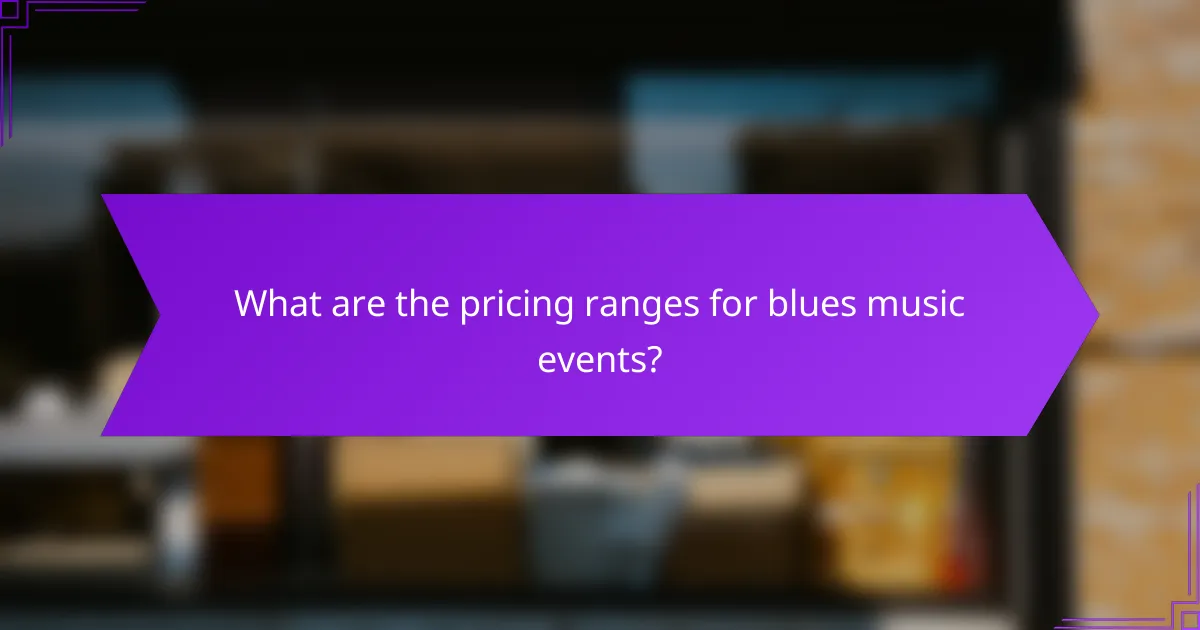
What are the pricing ranges for blues music events?
Pricing for blues music events can vary widely based on factors such as location, artist popularity, and venue size. Generally, ticket prices can range from around $10 to over $100, depending on these variables.
Factors Influencing Pricing
Several factors influence the pricing of blues music events. The artist’s fame plays a significant role; well-known musicians typically command higher ticket prices. Additionally, the venue’s capacity and location can affect costs, with larger venues in urban areas often charging more.
Seasonality can also impact pricing. Events during peak tourist seasons or major music festivals may see inflated prices due to increased demand. It’s advisable to check local listings for specific events to gauge current pricing trends.
Typical Price Ranges
For local blues gigs in smaller venues, ticket prices usually fall between $10 and $30. Mid-range events featuring regional artists might range from $30 to $60. Major concerts with renowned blues musicians can start at $60 and go upwards of $100 or more.
VIP packages or special seating options can further increase costs, sometimes exceeding $200. Always consider the total cost, including service fees, when budgeting for an event.
Tips for Finding Affordable Tickets
To find affordable tickets for blues music events, consider purchasing early or looking for promotional deals. Many venues offer discounts for advance purchases or group tickets.
Joining fan clubs or subscribing to newsletters can provide access to exclusive offers and pre-sale opportunities. Additionally, exploring local community events or open mic nights can be a budget-friendly way to enjoy blues music without the higher ticket prices.

